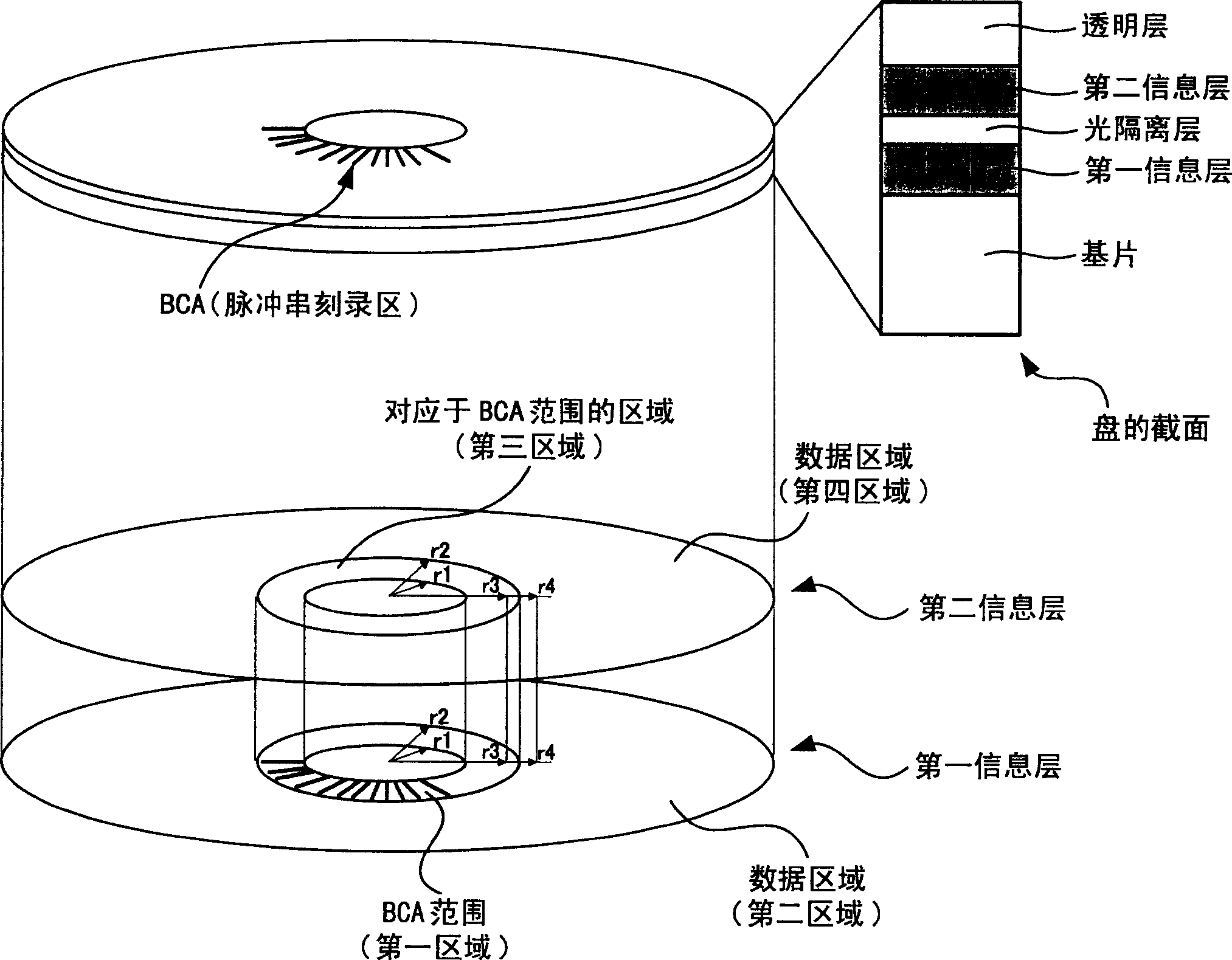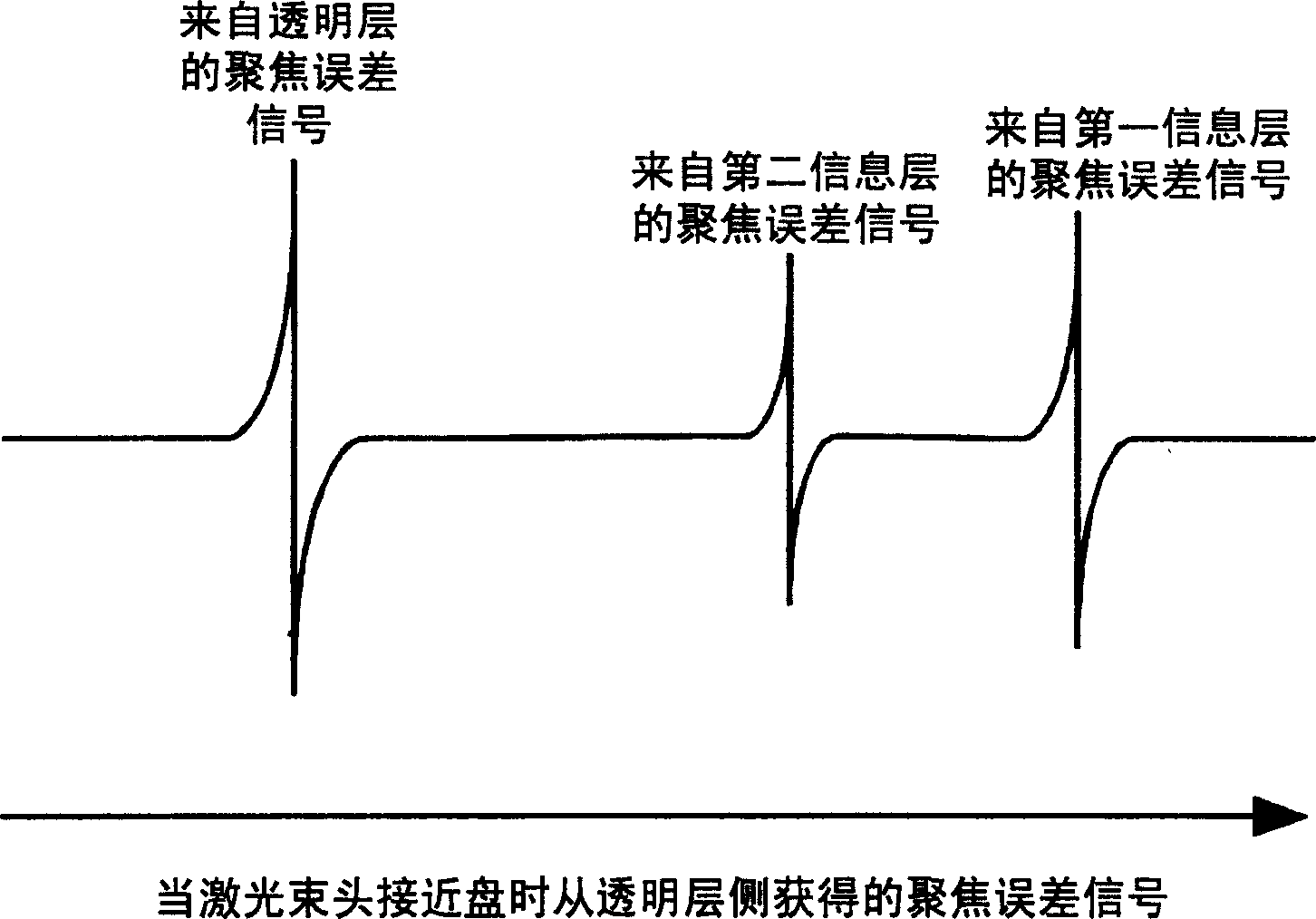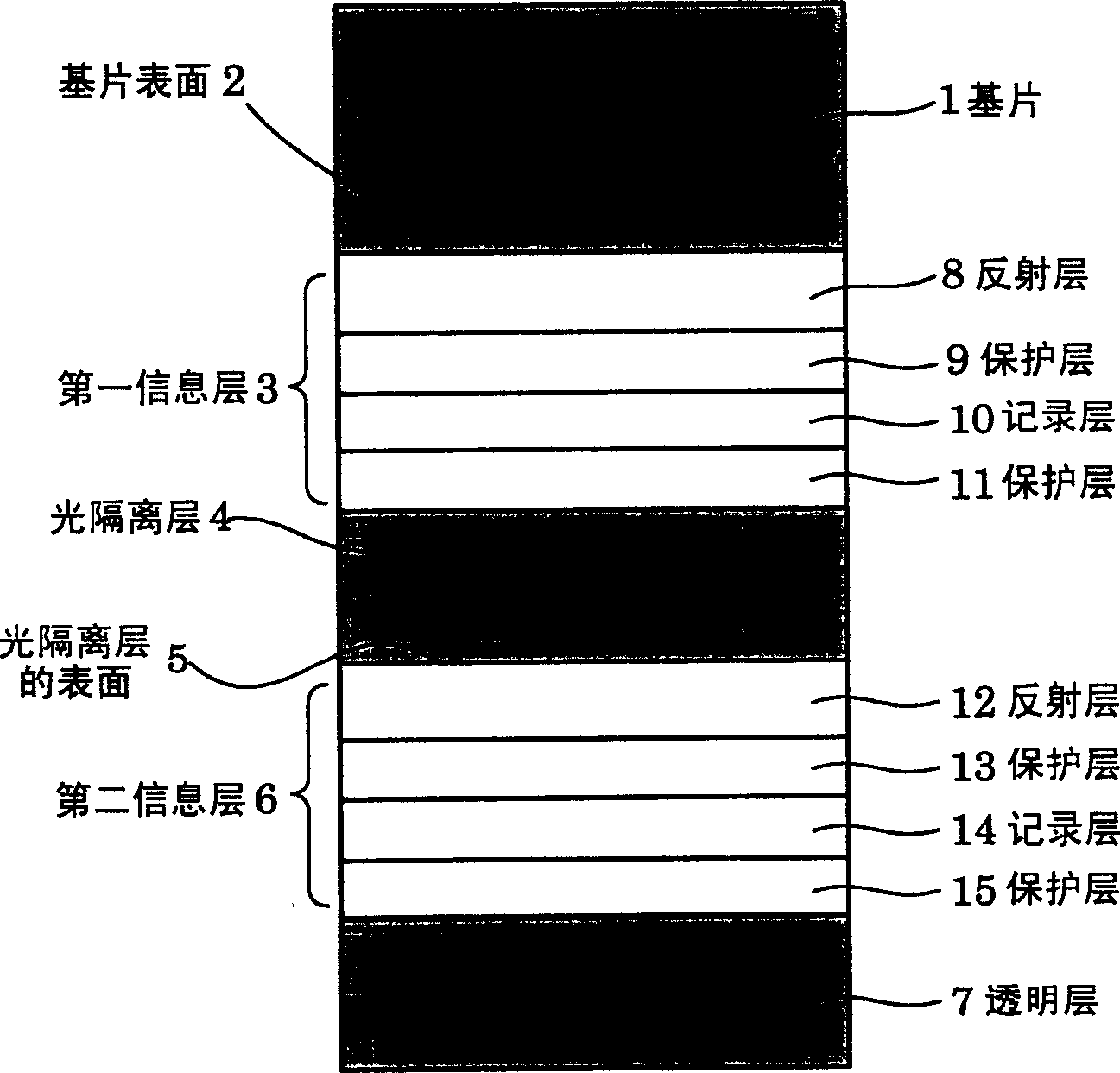Optical information recording medium and method for manufacturing the medium
A recording medium and optical information technology, applied in the manufacture of optical record carriers, optical recording/reproducing/erasing methods, optical record carriers, etc., can solve problems such as stopping initialization processing, and achieve the effect of improving production and preventing stoppage
- Summary
- Abstract
- Description
- Claims
- Application Information
AI Technical Summary
Problems solved by technology
Method used
Image
Examples
no. 1 example
[0076] Embodiments of the present invention will be described below with reference to the drawings.
[0077]A technique for solving the above-mentioned first problem of preventing the second information layer from being partially initialized during initialization of the first information layer is explained in this embodiment.
[0078] (disk structure)
[0079] The following will refer to image 3 The disc structure used in this embodiment will be described. exist image 3 In , the laser beam for recording or reproducing information or initializing the information layer enters from the transparent layer 7 side. The substrate 1 is made of a resin plate such as polycarbonate or PMMA or a glass plate. The surface of the substrate 2 is covered with helical or concentric grooves.
[0080] The first information layer 3 is formed on the substrate 1 (on the laser beam incident side). The first information layer 3 includes at least a reflective layer 8 , protective layers 9 and 11...
no. 2 example
[0132] A technique for solving the above-mentioned second problem of avoiding stop of initialization of the second information layer after defocusing occurs during initialization is explained in this embodiment.
[0133] When initializing the second information layer 6, with the BCA range on the first information layer 3 (the first area, see figure 1 ) of the same radius (the third region, see figure 1 ) and have the same data area on the first information layer 3 (the second area, see figure 1 ) area of the same radius (the fourth area, see figure 1 ) to change the initialization power, linear velocity and defocus amount in order to study the stability of the initialization. The results of the study are described below. The disk structure and initialization means in this embodiment are the same as those in the first embodiment, so detailed description is omitted.
[0134] On the first information layer 3, a BCA is preliminarily formed by initialization processing in a B...
no. 3 example
[0159] A technique for solving the above-mentioned second problem of avoiding stop of initialization of the second information layer after defocusing occurs during initialization is explained in the embodiment.
[0160] When initializing the second information layer 6, with the BCA range on the first information layer 3 (the first area, see figure 1 ) area of the same radius (the third area, see figure 1 ) with the data area on the first information layer 3 (the second area, see figure 1 ) area of the same radius (the fourth area, see figure 1 ) to change the feed spacing of the initialization laser beam in order to study the stability of the initialization. The results of the study are described below. The disk structure and initialization means in this embodiment are the same as those in the first embodiment, so detailed description thereof will be omitted.
[0161] On the first information layer 3, a BCA is preliminarily formed by initialization processing in an are...
PUM
| Property | Measurement | Unit |
|---|---|---|
| wavelength | aaaaa | aaaaa |
| diameter | aaaaa | aaaaa |
| power | aaaaa | aaaaa |
Abstract
Description
Claims
Application Information
 Login to View More
Login to View More - R&D
- Intellectual Property
- Life Sciences
- Materials
- Tech Scout
- Unparalleled Data Quality
- Higher Quality Content
- 60% Fewer Hallucinations
Browse by: Latest US Patents, China's latest patents, Technical Efficacy Thesaurus, Application Domain, Technology Topic, Popular Technical Reports.
© 2025 PatSnap. All rights reserved.Legal|Privacy policy|Modern Slavery Act Transparency Statement|Sitemap|About US| Contact US: help@patsnap.com



